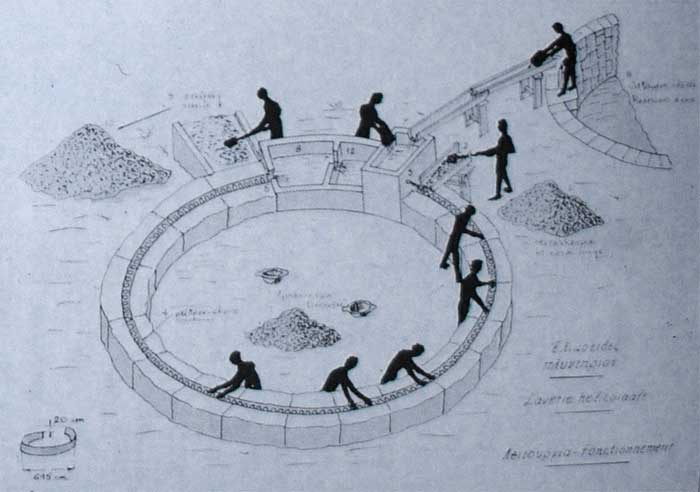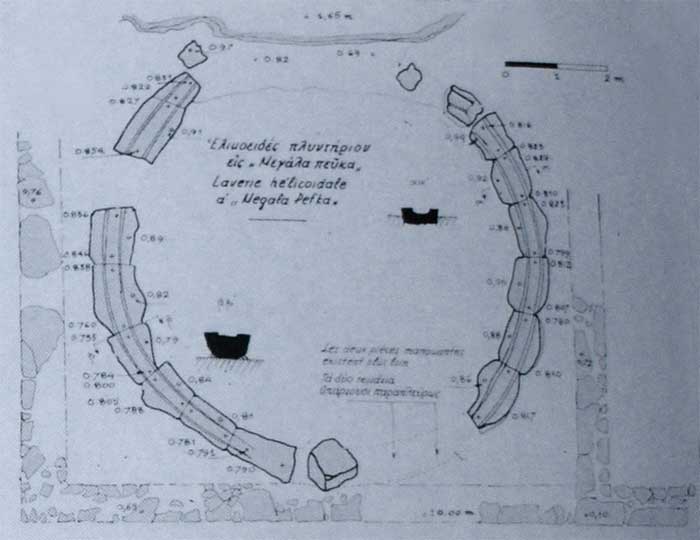
Helicoidal Ore Washeries
From
the ancient mine workshop areas near Lavrion, Attiki, Greece
Examples of Ancient Greek high-technology

Operation
of a Helicoidal washery
(Note: the name comes from the word helical - from helix i.e. spiral - as the
water
slowly spirals down towards the ground as it runs round the washery circumference)
Water is initially transferred from the cistern (top right) into the washery
tank
via an elevated channel. A hole in the side of the washery tank (3) allows water
to
meet the unwashed ore being shovelled into the start of the circular washery
(2).
As the water/ore mixture progresses round the circular channel (a 20 cm level
difference from start to finish) the heavy lead ore drops onto the depressions
while the unwanted impurities are carried round to the primary sedimentation
tank (8) at the end of the channel & removed by shovel. The clarified water
from the secondary sedimentation tank (12) is bucketed back into
the washery tank for reuse.

Plan
view of the Helicoidal washery at Megala Pefka (meaning large pine trees) -
(which is located on the hillsides close to Souriza's valley)
Acknowledgements for the diagrams:
- Engineering & Technology in Ancient Greece
by Christos Lazos (Aeolos press) (diagrams & photo)